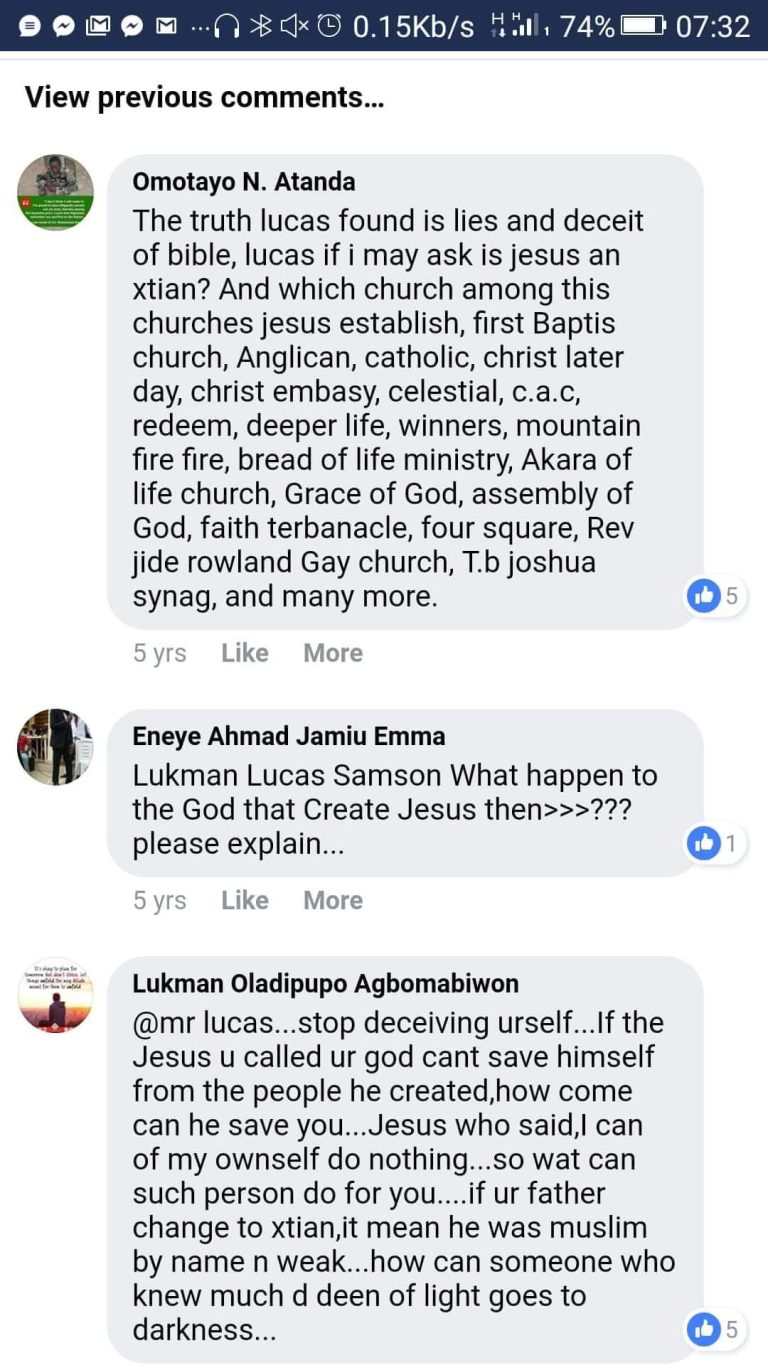Misgoded reading continued
Click here for previous session To be fair, Gnostic ideology did have a place in many, if not most, or even all groups regarded as dissenters from orthodoxy. But then again, Gnosticism has a place in orthodoxy as well, for what is gnosis if not the belief that its initiates possess some esoteric but…
Click here for previous session
To be fair, Gnostic ideology did have a place in many, if not most, or even all
groups regarded as dissenters from orthodoxy. But then again, Gnosticism has a place in
orthodoxy as well, for what is gnosis if not the belief that its initiates possess some
esoteric but essential knowledge necessary for salvation, which can neither be explained
nor justified? And what has this discussion thus far exposed, if not the lack of scriptural
foundation for the canon of Trinitarian orthodoxy?
Of the above groups, the Paulicians (whose name possibly derived from their
devotion to Paul of Samosata) hold special interest. Paul of Samosata reportedly took his
teaching from Diodorus, head of the Nazarene Church in Antioch. His teachings in turn
branched off the trunk of apostolic ideology through individuals such as Lucian (who in
turn taught Arius), Eusebius of Nicomedia, and even Nestorius (whose influence expanded from Eastern Europe as far east as China and as far south as Abyssinia). The
Paulician influence eventually spread to occupy most, if not all, of Europe and North
Africa. Yet so complete was their annihilation by the Roman Catholic Church during the
period of persecution, that both they and their books were virtually completely destroyed.
Only in the midnineteenth century was one of their sacred books, The Key of Truth,
discovered in Armenia and translated. From this document, a view of their beliefs and
practices can be appreciated.
The Paulicians may invite condemnation for their dualistic ideology, acceptance
of suicide and excess of asceticism. Notable is the peculiar Paulician concept of Jesus
Christ having been a phantasm, and not a man. On the other hand, the Paulicians adhered
to belief in divine unity, the virgin birth, baptism, and other creeds and practices which
date from the apostolic age. Included in the list of their particulars is the apparent lack of
an organized priesthood or hierarchy of clergy. The leaders married and had families.
Their services were characterized by simplicity of worship and lack of sacraments—they
didn’t even use holy water. The Paulicians refused to adopt any visible object of
worship—no relics, no images, not even the cross. They considered the use of images,
whether two or three dimensional, to be idolatrous, foreign to the teachings of Jesus, and
in violation of the second commandment. The doctrine of Incarnation appears to have
been denied, as were the doctrines of original sin and the Trinity—all rejected on the
basis of lacking scriptural foundation. The Paulicians denied the alleged crucifixion of
Jesus, and consequently rejected the doctrines of the resurrection, atonement, and
redemption of sins.
They also shunned infant baptism as an innovation foreign to the teachings and
practice of Jesus, and claimed it was worthless since children lack the capacity for mature
faith and repentance. They boycotted Christmas on the grounds that it was an illegitimate
holiday constructed as a concession to the pagans, who worshipped the rebirth of their
Sungod three days following the winter solstice, on December 25, at the annual festival
of Sol Invictus (The Invincible Sun). They neither solicited nor accepted tithes, maintained a strict diet, stressed devotion to worship in all aspects of life and aspired to
cleanliness of temper, thoughts, words and work.
A better model of the carpenterKing would be difficult to find, but for their
creed, they were killed. Over a period of centuries the Paulicians were hounded wherever
they were found. The Byzantine Empress Theodora reestablished image worship in
Constantinople during the ninth century and, as Gibbon notes, “Her inquisitors explored
the cities and mountains of the Lesser Asia, and the flatterers of the empress have
affirmed, that, in a short reign, one hundred thousand Paulicians were extirpated by the
sword, the gibbet, or the flames.”179
The Paulicians eventually were driven from Armenia to Thrace, and on to
Bulgaria. From there they spread to Serbia, Bosnia and Herzegovinia, then north to
Germany, west to France and south into Italy. By sea they found routes to Venice, Sicily
and Southern France. The rapid expansion of Paulician theology, which seems to have
been revived in the Cathari*
in or around the eleventh century, became a serious threat to
the Catholic Church, and was condemned at the Councils of Orleans in 1022, of Lombard
in 1165, and of Verona in 1184. St. Bernard of Clairvaux described the Cathari thusly: “If you interrogate them, nothing can be more Christian; as to their conversation, nothing can
be less reprehensible, and what they speak they prove by deeds. As for the morals of the
heretic, he cheats no one, he oppresses no one, he strikes no one; his cheeks are pale with
fasting, he eats not the bread of idleness, his hands labour for his livelihood.”
180
Nonetheless, the church condemned the Cathari, not for their ethics and sincerity,
but for their theology. Not until the Medieval Inquisition of the thirteenth century was the
church able to act upon their condemnation, but then, opening floodgates on the hostility
of several centuries, they applied the full force of their hatred with a vengeance sufficient
to establish their authority and destroy their enemies. The loss of the Paulicians, Cathari,
and the various other “heretic” Christian sects testifies to the terrible efficacy of the
religious cleansing of the Medieval Inquisition and subsequent periods of persecution. F.
C. Conybeare comments,



